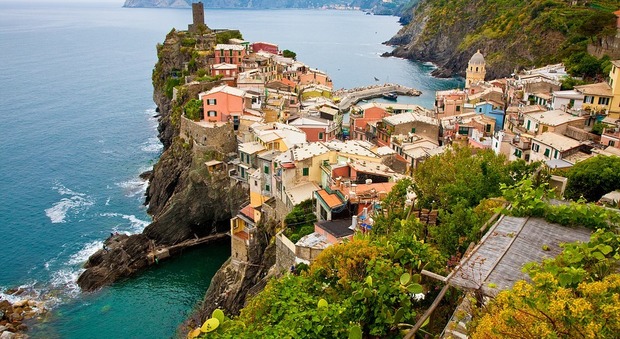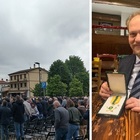Cinque Terre, sette cose da fare (e vedere) assolutamente a strapiombo sul Tirreno

di Eleonora Giovinazzo
Scopriamo insieme sette cose da fare e vedere assolutamente alle Cinque Terre.
1 - Percorrete il Sentiero l’Infinito. Collega Riomaggiore a Portovenere. E’ un meraviglioso percorso di 14 chilometri che si snoda tra ciàn (strisce di terra coltivabile sorrette da muretti a secco), boschi e scalinate a picco sul mare.
2 - Fate un’escursione in barca lungo il Golfo dei Poeti. Ammirare l’area marina protetta delle Cinque Terre dal mare è un’esperienza unica. Vedere i borghi da un’altra prospettiva è eccezionale.
3 - Percorrete il Sentiero Azzurro. E’ il sentiero più noto. Collega tra loro i cinque borghi ed è costituito da quattro tratti (Monterosso-Vernazza, Vernazza-Corniglia, Corniglia-Manarola, Manarola-Riomaggiore). L’accesso è a pagamento (7 euro), la distanza totale è di circa 10 chilometri e la difficoltà non è alta, nonostante i molti tratti in salita.
4 - Percorrete la via dell’Amore. Questo spettacolare ‘sentiero’ a picco sul mar Ligure e conosciuto in tutto il mondo, fu chiuso nel 2012 dopo che, a causa del dissesto idrologico, una frana ferì alcune turiste australiane. Da allora e fino al 2015 la Via dell’Amore è rimasta chiusa. Successivamente fu aperta, dopo alcuni lavori, per un breve tratto di circa 200 metri, ma per poter ripercorrere interamente questo suggestivo tratto probabilmente bisognerà aspettare fino al 2019.
5 - Percorrete la scalinata dalla stazione dei treni al paesino di Corniglia. Dal culmine, in una giornata di straordinaria limpidezza, si riesce a vedere nitidamente la Corsica. Il panorama è mozzafiato.
6 - Assaggiate le acciughe di Monterosso. Si tratta di uno dei piatti tipici del borgo di Monterosso, ma potrete trovarle in tutte le Cinque Terre. Definite anche “Pan du ma”, sono il pezzo forte di diverse ricette, tra cui il “tian”, tortino di acciughe e patate.
7 - Assaggiate i vini tipici. I vini delle Cinque Terre sono il frutto delle strisce di terra coltivate e delimitate dai muretti a secco che si trovano al di sopra dei borghi (i famosi ciàn). E’ qui che ad esempio vengono coltivate le viti per il passito Schiacchetrà, il Bianco Cinque Terre Doc e il Limoncino.
Ultimo aggiornamento: Giovedì 31 Agosto 2017, 17:53
© RIPRODUZIONE RISERVATA























